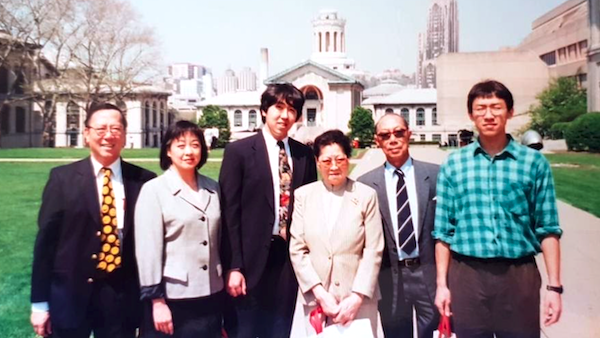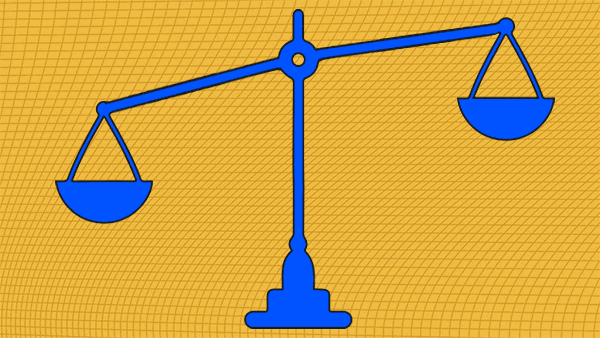Dear friends,
Around the world, students are graduating. If you’re one of them, or if someone close to you is graduating, congratulations!!!
My family swapped pictures on WhatsApp recently and came across this one, which was taken when I graduated from Carnegie Mellon (I’m standing in the middle). I was privileged to have already worked on a few AI projects thanks to my mentors in college, including Michael Kearns, Andrew McCallum, Andrew Moore and Tom Mitchell. But now, looking back, I reflect on how clueless I was and how little I knew about AI, business, people, and the world in general.
To this day, I don’t feel particularly clued in. Every year or so, I look back and marvel at how clueless I was a year ago, and I’m pretty sure I’ll feel the same way a year from now. This helps me to act with humility and avoid expressing unwarranted certainty.
If you’re graduating:
If you’ve already graduated, I hope you’ll take joy in the success of those who are coming up behind you.
Love to you all and keep learning, Andrew
News
Borderline AIU.S. immigration officials expect over 2 million migrants to reach the country’s southern border by the end of the year. They’re counting on face recognition to streamline processing of those who seek asylum. What’s new: The U.S. Customs and Border Protection agency developed an app called CBP One that matches asylum seekers with existing applications, Los Angeles Times reported. How it works: Would-be immigrants who feel their lives are in danger in their home country — — most of whom come from violence-wracked parts of Mexico and Central America — can apply for asylum status in the U.S. Some 70,000 who have applied remain in Mexico awaiting a decision. CBP One is designed to expedite acceptance or rejection when those people return to the border.
Yes, but: Privacy experts are concerned about data collection and surveillance of migrants who have little choice but to use the app. Confidentiality is also a worry, since hackers stole 180,000 images from a border patrol database in 2018. Behind the news: Launched in October, the app initially was limited to cargo shippers, pleasure boaters, and non-immigrant travelers. In May, however, the number of migrants surged, and the agency received emergency approval to bypass privacy laws and use the app to process applications to enter the country. Why it matters: Many migrants who arrive at the southern U.S. border are fleeing poverty, gang violence, political instability, and climate change-induced environmental crises. AI could help those in danger find refuge more quickly. We’re thinking: Immigration is hugely beneficial to the U.S., and AI can help scale the process. But it’s crucial that the policies we scale are fair, transparent, and astute rather than biased or xenophobic.
3D Scene Synthesis for the Real WorldResearchers have used neural networks to generate novel views of a 3D scene based on existing pictures plus the positions and angles of the cameras that took them. In practice, though, you may not know the precise camera positions and angles, since location sensors may be unavailable or miscalibrated. A new method synthesizes novel perspectives based on existing views alone. What’s new: Chen-Hsuan Lin led researchers at Carnegie Mellon University, Massachusetts Institute of Technology, and University of Adelaide in developing the archly named Bundle-Adjusting Neural Radiance Fields (BARF), a technique that generates new 3D views from images of a scene without requiring further information. Key insight: The earlier method called NeRF requires camera positions and angles to find values that feed a neural network. Those variables can be represented by a learnable vector, and backpropagation can update it as well as the network’s weights. How it works: Like NeRF, BARF generates views of a scene by sampling points along rays that extend from the camera through each pixel. It uses a vanilla neural network to compute the color and transparency of each point based on the point’s position and the ray’s direction. To determine the color of a given pixel, it combines the color and transparency of all points along the associated ray. Unlike NeRF, BARF’s loss function is designed to learn camera positions and angles, and it uses a training schedule to learn camera viewpoints before pixel colors.
Results: The researchers compared BARF to NeRF, measuring their ability to generate a novel view based on several views of an everyday scene, where the viewpoints were unknown to BARF and known to NeRF. BARF achieved 21.96 competitive peak signal-to-noise ratio, a measure of the difference between the generated and actual images (higher is better). NeRF achieved 23.25 competitive peak signal-to-noise ratio. Why it matters: Data collected in the wild rarely are perfect, and bad sensors are one of many reasons why. BARF is part of a new generation of models that don’t assume accurate sensor input, spurring hopes of systems that generalize to real-world conditions. We’re thinking: In language processing, ELMo kicked off a fad for naming algorithms after Sesame Street characters. Here’s hoping this work doesn't inspire its own run of names.
A MESSAGE FROM DEEPLEARNING.AI
Join us on June 17, 2021, to discuss the difference between data scientists and machine learning engineers and how to transition from one role to the other. This Expert Panel is presented by DeepLearning.ai and FourthBrain. Sign up here
Every Problem Looks Like a NailRobots are brushing their way into the beauty market. What’s new: A trio of companies is developing automated nail-painting devices that integrate robotics and computer vision, The New York Times reported. How it works: Users select a color and place a hand or finger into a slot in a toaster-sized machine. The system scans the fingertips, and an automated paint dispenser — in some cases, a mechanical arm tipped by a brush — coats each nail. These machines update earlier nail-decorating gadgets that, say, applied decals without using AI.
Behind the news: The beauty industry has embraced a variety of AI techniques.
Why it matters: Americans spent $8.3 billion on nail care last year. Automated systems could appeal to people who are looking for a fast makeover as well as those who want to continue social distancing without foregoing manicures. But such systems also could also displace workers who already contend with low wages. We’re thinking: Paint your nails or don’t, but everyone who writes code should take good care of their hands.
Irresponsible AIFew companies that use AI understand the ethical issues it raises. What’s new: While many companies are ramping up investments in AI, few look for and correct social biases in their models, according to a report by the credit-scoring company Fico. The report surveyed 100 C-level executives in data, analytics, and AI departments at companies that bring in revenue of $100 million or more annually. What they found: Nearly half of respondents said their company’s investment in AI had grown in the last 12 months. But there was no corresponding rise in efforts to make sure AI was ethical, responsible, and free of bias.
Behind the news: This is Fico’s second annual report, and it shows some improvement over the previous survey: Last year, 67 percent of respondents said they did not monitor systems after deployment. Why it matters: Never mind technical issues — taking the survey’s results at face value, a substantial percentage of large companies aren’t ready for AI transformation on an ethical level. Businesses that pursue AI without paying attention to ethical pitfalls run the risk of alienating customers and violating laws. We’re thinking: Companies that pay attention to ethics — in AI and elsewhere — will reap rewards in the form of better products, happier customers, and greater fairness and justice in the world.
A MESSAGE FROM DEEPLEARNING.AI
Check out Practical Data Science, our new program in partnership with Amazon Web Services (AWS)! This specialization will help you develop practical skills to deploy projects and overcome challenges using Amazon SageMaker. Enroll now Work With Andrew Ng
Data Scientist - Psychometrics: Workera is looking for a data scientist to develop our adaptive testing platform, analyze items, and leverage our skills dataset to improve our assessment capabilities. Apply here
Head of Applied Science: Workera is looking for a data-science leader to make our data valid and reliable and leverage it to create algorithms solving novel problems in talent and learning. You will own our data science and machine learning practice and work on some of the most challenging and exciting problems of our era, including personalized learning and computerized adaptive testing. Apply here
Head of Engineering: Workera is looking for an engineering leader to grow our world-class engineering team and unlock its potential. You will lead engineering execution and delivery, help make Workera a rewarding place to work, and participate in company oversight. Apply here
Subscribe and view previous issues here.
Thoughts, suggestions, feedback? Please send to thebatch@deeplearning.ai. Avoid our newsletter ending up in your spam folder by adding our email address to your contacts list.
|







.png?upscale=true&width=1200&upscale=true&name=Specialization%20Name%20(1).png)